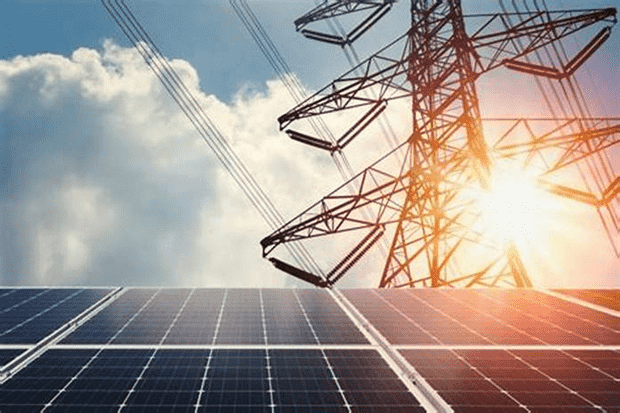Egypt’s Minister of Electricity and Renewable Energy, Mohamed Shaker, has disclosed Egypt’s ambition to establish a power interconnection with Europe, enabling the export of electricity to European nations.
This initiative was discussed during a meeting between Shaker and Gordon Dickie, Chairman of IM Power, aimed at enhancing collaboration between Egypt’s energy sector and the British company.
Shaker highlighted Egypt’s vision to become a regional energy hub and expressed readiness to collaborate with European partners in constructing a power linkage line to Europe. The minister welcomed potential cooperation with IM Power in renewable energy ventures, particularly in wind and solar energy, green hydrogen, and the localization of related industries within Egypt.
Highlighting Egypt’s commitment to renewable energy, Shaker aimed to increase its contribution to the country’s total power generation to at least 42 percent by 2030. Egypt already boasts electricity interconnection lines with Jordan, Sudan, and Libya and is exploring similar projects with Saudi Arabia, Greece, Cyprus, and Italy.
It may be noted that Egypt’s pursuit of a power interconnection with Europe signifies a significant step in its efforts to expand its energy sector and establish itself as a key player in the regional and global energy markets.
Egypt’s initiatives in exporting electricity to Europe stem from its abundant renewable energy resources, particularly solar and wind power. It aims to tap its available resources and export excess electricity to Europe. Furthermore, Egypt aims to diversify its economy, generate revenue through energy exports, and enhance its status as a regional energy hub. Also, establishing power interconnections with Europe could bolster energy security for both Egypt and Europe by facilitating mutual energy exchanges and reducing dependence on fossil fuels.
Technical Considerations: Establishing a power interconnection between Egypt and Europe involves constructing high-voltage transmission lines over long distances, potentially spanning multiple countries and regions. This requires careful planning, coordination, and investment in infrastructure to ensure the efficient and reliable transmission of electricity between the two regions. Technical challenges such as grid synchronization, voltage compatibility, and regulatory frameworks must be addressed to enable seamless energy trade between Egypt and European countries.
Collaboration with European Partners: Egypt’s cooperation with European partners, including companies like IM Power, is crucial for realizing its vision of establishing a power interconnection with Europe. Such partnerships involve technology transfer, expertise sharing, and joint investment in infrastructure projects. By leveraging the expertise and resources of European companies, Egypt can accelerate the development of its renewable energy sector and strengthen its position in the global energy market.
Renewable Energy Development: Besides exporting electricity to Europe, Egypt is committed to expanding its domestic renewable energy capacity. The country has set ambitious targets for increasing the share of renewable energy in its total energy mix, focusing on wind, solar, and hydroelectric power. Investments in renewable energy projects support Egypt’s energy security goals and contribute to job creation, economic growth, and environmental sustainability.
Regional Energy Cooperation: Egypt’s efforts to establish power interconnections with neighboring countries, such as Jordan, Sudan, Libya, and potential future partners like Saudi Arabia, Greece, Cyprus, and Italy, underscore its commitment to regional energy cooperation. Egypt aims to strengthen political and economic ties with its neighbors by fostering cross-border energy trade and collaboration while promoting regional stability and prosperity.
Overall, Egypt’s pursuit of a power interconnection with Europe reflects its strategic vision for leveraging renewable energy resources to drive economic development, enhance energy security, and promote domestic and regionally sustainable growth.


